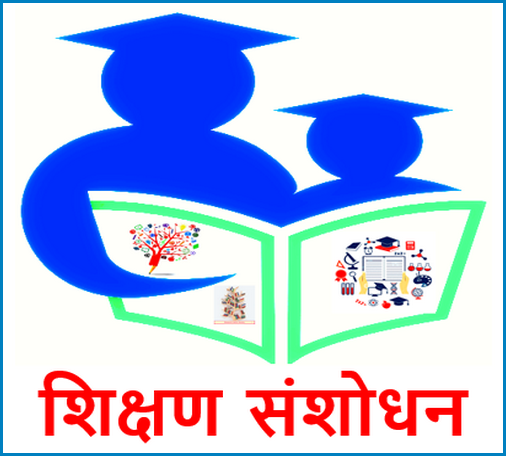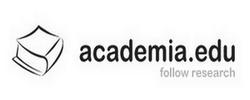CONFLICTS OF INTEREST POLICY
General
Authors are required to disclose all sources of institutional, private and corporate financial support for their study. Donors of materials (for free or at a discount from current rates) should be named in the source of funding and their location (town, state/county, country) included.
Other donors will be identified in the text. If no funding has been available other than that of the author’s institution, this should be specified upon submission. Authors are also required to disclose any potential conflict of interest. These include financial interests (for example patent, ownership, stock ownership, consultancies, speaker’s fee,) or provision of study materials by their manufacturer for free or at a discount from current rates.
Author’s conflict of interest (or information specifying the absence of conflicts of interest) and the sources of funding for the research if any will be published under a separate heading entitled “Conflict of Interest and Sources of Funding Statement”.
Authors
When authors submit a manuscript of any type or format they are responsible for disclosing all financial and personal relationships that might bias or be seen to bias their work.
Appropriate disclosures are made in three distinct sections of a manuscript: Acknowledgements, Funding, and Disclosures. The distinctions between these sections are described below.
- All sources of funding for the research reported, including direct and indirect financial support, supply of equipment or materials, in-kind support (e.g., optical design/manufacturing) and other support (such as specialist statistical or writing assistance) should be disclosed in the manuscript. Specific sources of government, foundation, or commercial grants or awards, including identifiers if available, should be listed in a separate Funding section for each author. Other sources of relevant research funding may be listed in an Acknowledgments section.
- All relevant commercial relationships which occurred or extended within a 12-month period preceding submission, and which relate to the content of the manuscript, should be disclosed for any authors who have such relationships. This should be done using the Commercial Relationships Disclosure Codes below, in a separate Disclosures section.
- Authors should list in the Disclosures section any additional conflicts of interest, financial or non-financial, dealing with the subject matter of the manuscript that editors, reviewers or readers might reasonably expect to know or might otherwise affect the interpretation of the findings.
- If there are no conflicts, the Disclosures section should include the following statement: “The authors declare that there are no conflicts of interest related to this article.”
- It is the responsibility of the First or Corresponding Author to assure that each Co-author is aware of this Policy and to ensure that all required funding and disclosure information is included for all authors.
- Authors are expected to submit a Correction if a previously unrecognized conflict of interest is discovered after publication.
Peer Reviewers
Reviewers should be asked at the time they are asked to critique a manuscript if they have conflicts of interest that could complicate their review. Reviewers must disclose to editors any conflicts of interest that could bias their opinions of the manuscript, and should recuse themselves from reviewing specific manuscripts if the potential for bias exists. Reviewers must not use knowledge of the work they’re reviewing before its publication to further their own interests.
Editors and Journal Staff
Editors who make final decisions about manuscripts should recuse themselves from editorial decisions if they have conflicts of interest or relationships that pose potential conflicts related to articles under consideration. Other editorial staff members who participate in editorial decisions must provide editors with a current description of their financial interests or other conflicts (as they might relate to editorial judgments) and recuse themselves from any decisions in which a conflict of interest exists. Editorial staff must not use information gained through working with manuscripts for private gain. Editors should publish regular disclosure statements about potential conflicts of interests related to the commitments of journal staff. Guest editors should follow these same procedures.
Reporting Conflicts of Interest
Articles should be published with statements or supporting documents, such as the Shikshan Sanshodhan conflict of interest form, declaring:
- Authors’ conflicts of interest; and
- Sources of support for the work, including sponsor names along with explanations of the role of those sources if any in study design; collection, analysis, and interpretation of data; writing of the report; the decision to submit the report for publication; or a statement declaring that the supporting source had no such involvement; and
- Whether the authors had access to the study data, with an explanation of the nature and extent of access, including whether access is on-going.
To support the above statements, editors may request that authors of a study sponsored by a funder with a proprietary or financial interest in the outcome sign a statement, such as “I had full access to all of the data in this study and I take complete responsibility for the integrity of the data and the accuracy of the data analysis.”
Declaration of competing interests
A competing interest—often called a conflict of interest—exists when professional judgment concerning a primary interest (such as patients’ welfare or the validity of research) may be influenced by a secondary interest (such as financial gain or personal rivalry). It may arise for the authors of an article in Shikshan Sanshodhan when they have a financial interest that may influence, probably without their knowing, their interpretation of their results or those of others.
We believe that, to make the best decision on how to deal with an article, we should know about any competing interests that authors may have, and that if we publish the article readers should know about them too. We are not aiming to eradicate such interests; they are almost inevitable. We will not reject your article simply because you have a conflict of interest, but we want you to make a declaration on whether or not you have competing interests. (We also ask our staff and reviewers to declare any competing interests.)
A declaration of interests for all authors must be received before an article can be reviewed and accepted for publication. It should take one of two forms, depending on what type of article you are submitting
Below are some examples for different sorts of disclosures
No competing interests
“All authors declare no support from any organization for the submitted work; no financial relationships with any organizations that might have an interest in the submitted work in the previous years; no other relationships or activities that could appear to have influenced the submitted work.”
Grant funding for research but no other competing interest
“All authors declare they have had financial support from ABC institute/university/organization for the submitted work; no financial relationships with any organisations that might have an interest in the submitted work in the previous three years; no other relationships or activities that could appear to have influenced the submitted work.”
Mixed Disclosure
“All authors declare they have received support from any organisation for the submitted work; AB has received research grants and honorariums from XYZ institute/university/organization, BBB has been paid for developing and delivering educational presentations for CCC foundation, DF does consultancy for DDD and EEE institute/university/organization; no other relationships or activities that could appear to have influenced the submitted work.”
Shikshan Sanshodhan has a transparent publications policy and adheres in principle to the Conflict of Interest policy recommended by Shikshan Sanshodhan. Journal does not discriminate on the basis of the source of material submitted, provided full disclosure is provided and appropriate declaration of interest statements and acknowledgments are included in published manuscripts. Thus, we require that authors/submitter’s include comprehensive ‘Declaration of Interest’ and ‘Acknowledgements’ sections in submitted articles. All authors must disclose any financial and personal relationships with other people or organizations that could inappropriately influence (bias) their work. It is the sole responsibility of authors to disclose any affiliation with any organization with a financial interest, direct or indirect, in the subject matter or materials discussed in the manuscript (such as consultancies, employment, paid expert testimony, honoraria, speakers bureaus, retainers, stock options or ownership, patents or patent applications or travel grants) that may affect the conduct or reporting of the work submitted. All sources of funding for research are to be explicitly stated. If uncertain as to what might be considered a potential conflict of interest, authors should err on the side of full disclosure.
More specifically, we request for the following:
- All relevant potential conflicts of interest for each named author and/or a statement of no-conflicts if there are none relevant to the contents of the article for any author(s).
- Disclosure of how the article is funded, and specifically, the disclosure of any and all pharmaceutical company funding (partial or total) OR a statement that there was no involvement of a pharmaceutical/other company (if this is the case).
- Comprehensive explanation of the role of the sponsors in article preparation (if the article is sponsored in part or whole).
- Disclosure of any medical writing/editorial assistance with the preparation of the article (the medical communication agency and the individuals involved need to be named).
Contributions from individuals who do not qualify for authorship should be acknowledged in the ‘Acknowledgments’ section. This should include details (with professional affiliations) of any other contributorship, such as data analysis, statistics, data collection, technical assistance, special thanks, personal assistance, and dedications.
The ‘Declaration of Interest’ and ‘Acknowledgements’ sections will be made available to reviewers and will appear in the published article. Please note that the Editor(s) or Publisher can make or suggest changes to these statements where necessary. If any potential conflicts of interest are found to have been withheld following publication, the journal will proceed according to the Committee on Publication Ethics guidelines.
The intent of this policy is not to prevent authors with any particular relationship or interest from publishing their work, but rather to adopt transparency such that reviewers, editors, the publisher, and most importantly, readers can make objective judgements concerning the work product.
Once published, the article will be made free to read upon publication under a Creative Commons Attribution (CC-BY-NC-ND) license 4.0
The published article can be distributed under the terms of the Creative Common Attribution License (CC-BY-NC-ND). The use, distribution or reproduction in other forums is permitted, provided the original author(s) or licensor are credited and that the original publication in this journal is cited, in accordance with accepted academic practice. No use, distribution for commercial or reproduction is permitted which does not comply with these terms.
![SHIKSHAN SANSHODHAN [ ISSN(O): 2581-6241 ] Peer-Reviewed, Referred, Indexed Research Journal. Impact Factor : 7.384](https://shikshansanshodhan.researchculturesociety.org/wp-content/uploads/SS-TITLE-HEADER.png)




